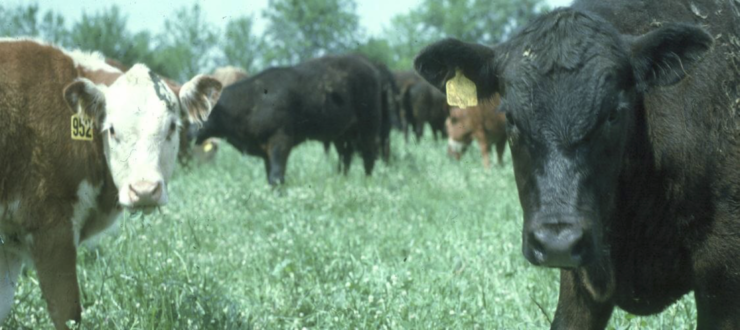
Winter annual forages such as the small grains (rye, wheat, and oats), annual ryegrass, and several Brassica species (including turnips, rape, and kale) benefit many livestock farms. These species are widely adapted, easy to grow, and produce highly nutritious forage. In addition, they make most of their growth during the cooler months of the year when warm season species are dormant or unproductive.
Nonetheless, on many farms the benefits of winter annuals could be increased with a little extra attention and effort. Ironically, in some cases managers apparently don’t recognize, or at least are not fully aware, that problems exist or that opportunities are being missed.
In most of the Southeast, winter annuals can be planted in September or October on a prepared seedbed or no-tilled into an area where there is no plant competition. Winter annuals overseeded on a warm season grass sod are generally planted about six weeks later, to avoid competition from the summer grass. Considerations such as seeding rate, seeding depth, and seed/soil contact are always important. Weather can affect planting date, but planting as early as possible means more, and earlier, autumn growth.
Applying fertilizer and lime according to soil test recommendations favors good production. With early-planted winter annual grasses, this normally includes applying at least 60 units of nitrogen per acre at or near planting time, although a lesser amount may be applied to late in overseeding situations (perhaps none initially if annual ryegrass is the only species planted). Typically, 50 to 60 units of nitrogen should be applied to winter annual grasses in late January or early February, and one or even two similar applications may be justifiable later in the growing season.
For a legume-small grain mixture planted on a prepared seedbed in early autumn, 60 pounds of nitrogen is normally applied at planting. With overseeded grass/legume stands, 30 to 60 units of nitrogen per acre should normally be applied in late January or in February. If the legume comprises 25 to 30 percent or more of the ground cover in spring, no additional nitrogen will be required.
There is a natural tendency for under-grazing of winter annuals to occur in spring because more forage is produced. Thus, stocking rates that were suitable in the fall and winter months quickly become inadequate. It is possible to overgraze pastures in spring, but this mainly occurs when a pasture is soft and wet enough that extreme trampling damage occurs.
Reasons for avoiding under-grazing of winter annuals in the spring include that a large accumulation of forage will result in excessive waste. Keeping a pasture grazed to around 3 to 4 inches (ideally) minimizes these losses. If clovers or other legumes are present, they will tend to be shaded out by taller-growing grasses. In addition, the grazing season of winter annuals will extend a bit longer if they are kept grazed down.
Obviously, when excessive amounts of pasture forage begin to accumulate, a producer can increase the stocking rate. For example, a stocker cattle operator might put some brood cows on the pastures. In some situations it may be feasible to purchase additional animals to utilize excess forage growth.
Another remedy is to divide the pasture and concentrate animals to increase the stocking rate on part of the pasture. This can help maintain forage quality in the area being grazed, while offering the option of harvesting hay or haylage from the remaining area. Although spring is often not a good time to put up stored forage, it can be of great benefit when possible because of the potentially excellent quality of hay or haylage made from winter annuals.
However, the growing season of winter annuals overlaps with that of summer perennial grasses. Thus, where warm season sods have been overseeded, it is important to closely graze or harvest forage of winter annual forages before serious shading of the summer grass occurs. For this reason, it is desirable to overseed no more than about one-third of the warm season pastures on a farm in a given year.
___________________
Foraging Ahead is a column presented by Ragan & Massey and written by Dr. Don Ball, Professor Emeritus at Auburn University. Dr. Ball is one of the authors of “Southern Forages,” available here.
